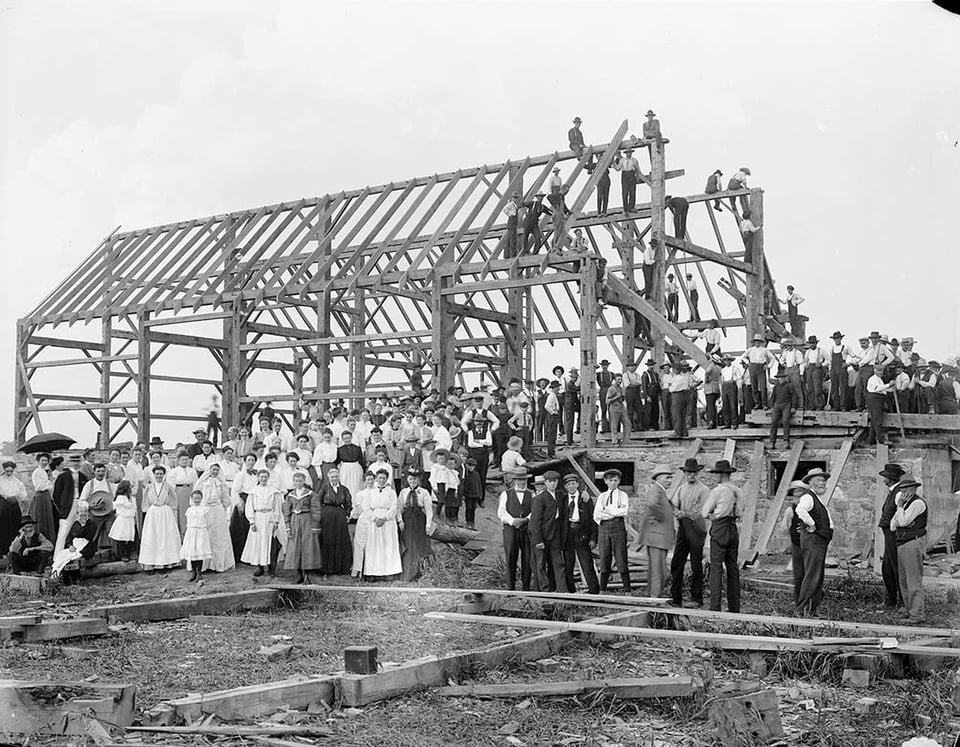Partnering
Community thriving is a team sport.
(Expected reading time: 5-7 minutes.)
Dear Brilliant Reader,
Hello, and welcome back to Patterns for Thriving! I’m Michael, your gracious, witty, and extremely humble host. 👋
As a reminder: We’re discovering 50 new “building block” patterns of community, inspired by A Pattern Language (APL), our favorite relic from the 1970s - other than yours truly. If you’re new here, we have a backgrounder to get you oriented. And if you aren’t already subscribed, you can sign on this dotted line:
We are going on a “random walk” through our new patterns, which is exactly how the original APL is meant to be used. This week, we are taking a closer look at the vital importance of partnerships in community organizations.
Thanks for being here! Away we go….

514. Partnering
. . . When Collective Action (506 - to be published) and Shared Ownership (512 - to be published) are woven into a community, the natural next step is to share resources across organizations. Such coordination, when found in Activity Nodes (30) and the Necklace of Community Projects (45), can make things like Small Services Without Red Tape (81) cheaper and more effective for everyone.
In Postmodern times, the unit of work has shifted from the individual to the group.
Our ability to coordinate and distribute work is perhaps better today than at any other time in history. The Internet gives us the ability to stay in constant contact and awareness of each other, like a global flock of birds. This gift is quite new to us, and it would be fair to say that we’re still very much adjusting to our new reality.
In this brave new world, shareholder capitalism has adopted the doctrine of core competencies - stick to the things that you do uniquely well, and hand off everything else to others. This is the line of thinking that has resulted in outsourcing of all kinds, and has also caused many companies to turn their employees into contractors, often against the employees’ will.
The result of these arrangements is a tangle of partnerships and contracted services, with mixed results for customers, employees, and other stakeholders. Companies have often used partnerships to absolve themselves of responsibility and liability for difficult problems. Figuring out who is ultimately accountable for a company’s behavior can be maddening. The results of such distributed work can be outright dangerous to the public.
There has been a parallel, and more hopeful, revolution in the world of charities and nonprofits. To be sure, these organizations have also engaged in a lot of outsourcing and contracting, with mixed results. But they are also finding their way towards truly innovative partnership models that bring many different groups and organizations to the table:
Bridge to the Mountains in Pittsburgh, Pennsylvania, the leading provider of street outreach in its city and county, has helped reverse over 1,000 opioid overdoses since 2019 by partnering with Prevention Point Pittsburgh and numerous other local agencies and charities.
The Neighborhood Resilience Project, also in Pittsburgh, opened a Free Health Center, partnering with the University of Pittsburgh Health System to provide primary and secondary medical care to over 700 local residents, with no cost to patients.
Parkland Memorial Hospital in Dallas, Texas, created an expansive health records system that it shares with 98 community partners, collectively taking care of people living in poverty with serious chronic health issues.
When done well, partnering strengthens the reach and effectiveness of each participant. In the same way that not everyone needs their own lawnmower, not every organization needs to provide for all of the needs they identify. Nor do they need to build up their own individual back-end administrative services; private schools and independent medical practices are reaping the benefits of collaborating on common tasks to keep their organizations running.
Therefore:
Let people and organizations engage in partnerships with other like-minded groups, as early and often as possible. Look for partners whose abilities extend your own. Pay special attention to the dignity of each partner, ensuring they continue to feel a sense of agency in their own work.
+++
Neighborhood activities like Lending Libraries (535) are obvious candidates for partnership. Partnering among community groups can even lay the groundwork for social change when The Bandwagon (548 - to be published) pushes a social concern to the forefront of public awareness. Partner organizations will benefit from implementing Small Work Groups (148). If they are sharing a common workspace, creating an intentional Eating Atmosphere (182) and Workspace Enclosure (183) for each project can help create cohesive bonds among groups. . . .
Next time in Patterns for Thriving: Pattern 548, The Bandwagon. In praise of the “bandwagon” effect, when something becomes widely popular in a community.
In parallel with this project, I’m producing a community radio show, Postcards from Jubilee Station (Spotify) (Apple), which uses these patterns to offer a story-based meditation practice. What does it feel like when we all decide to be generous with each other - with all of us? In recent episodes, we’ve been invited to the town-wide Moving Up Day for schoolkids, and gone on the Cumberland March to celebrate Juneteenth. Hope to see you over there.
Yours together, forever, Michael
